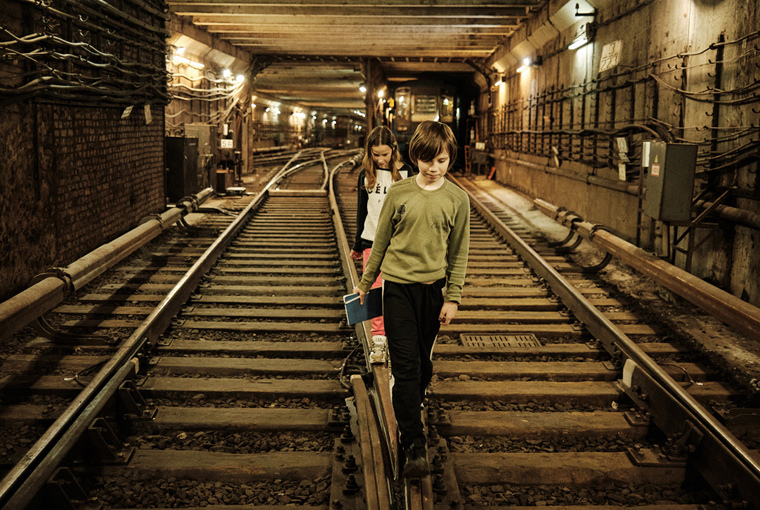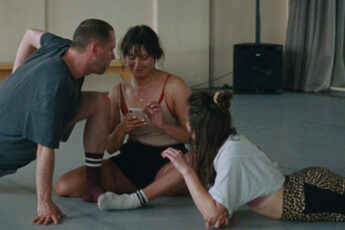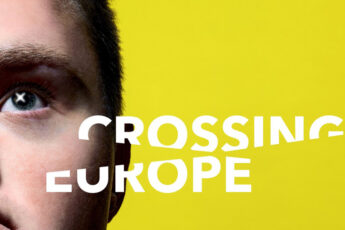Childhood in Times of War
Ivan Ostrochovský and Pavol Pekarčík’s Photophobia (Svetloplachosť, 2023)
Vol. 144 (April 2024) by Martin Kudláč
Ivan Ostrochovský and Pavol Pekarčík, the Slovakian filmmakers renowned for their award-winning documentary anthology Velvet Terrorists (2013), have reunited to embark on a new cinematic venture, Photophobia. The film unfolds against the backdrop of the ongoing Russo-Ukrainian war, capturing its civilian experience from the underground confines of Kharkiv’s metro system. Ostrochovský and Pekarčík both undertook a comprehensive role, sharing responsibilities in writing, directing, cinematography, and editing. Absent from this collaboration is Peter Kerekes, the third director on Velvet Terrorists as he is currently engaged in his own series of projects. However, his prior acclaimed work 107 Mothers (2021) was also filmed in Ukraine in an Odessa prison before Russia’s full-scale invasion in early 2022.
Photophobia made its debut at the Venice Film Festival, securing the prestigious Europa Cinemas Label for Best European Film at the Giornate degli Autori section. Following this accolade, it further distinguished itself by winning the Best Czech Documentary award at the Ji.hlava Film Festival before it was submitted as Slovakia’s official entry for the Academy Award for Best International Feature Film.
Photophobia blends poetic documentary realism with fiction filmmaking elements, centering on the life of 12-year-old Niki (Nikita Tiščenko) and his family. Like many others, Niki’s family find themselves seeking temporary refuge in the underground tunnels of Kharkiv’s subway system. The narrative unfolds through the innocent perspectives of Niki and his newfound friend, 11-year-old Vika (Viktorija Mac), delving into themes of resilience, hope, and the remarkable human ability to discover joy and maintain a semblance of normalcy amidst the gravest situations. This exploration provides a poignant insight into the enduring spirit of those affected by the conflict.
The decision by Ostrochovský and Pekarčík to film on location, despite the very real threats faced by a city under siege, imbues Photophobia with a tangible level of authenticity. This authenticity is further enhanced by their choice to cast actual local residents. Distinct in its approach, Photophobia diverges from conventional war documentaries. Rather than concentrating on the dynamics of the front lines, it shifts focus to the daily lives of individuals compelled to seek sanctuary underground. The film presents a humanistic and empathetic vision, capturing the essence of displacement, survival, and the unyielding resilience of the human spirit.
Photophobia vividly captures the everyday within the crowded confines of the underground, alongside the improvised living conditions faced by its inhabitants. The film portrays moments of simple joy amidst the backdrop of conflict, yet it does not shy away from addressing the psychological strains placed on children and their parents due to their subterranean existence. Beyond their collaboration on Velvet Terrorists and a host of other documentary projects, the documentarists have pursued individual projects, with Ostrochovský recently turning his focus towards fiction filmmaking, while Pekarčík continues to refine his distinctive approach to stylized documentary filmmaking.
As Photophobia unfolds, the filmmakers broaden their character spectrum to enrich the psychosocial exploration, all the while maintaining their main focus on the young protagonists. Niki’s parents embody the adult perspective, voicing concerns over relatives in other conflict-stricken regions of Ukraine and grappling with apprehensions about the future. The inclusion of a nurse in the story brings to light the health challenges arising from the claustrophobic refuge, illustrating the tangible impact of prolonged underground living. The film’s title is drawn from a real condition often affecting children who have spent extended periods in hiding, whereby they suffer from an aversion to light as a result of constant sheltering, a state Niki also experiences.
Despite the adversity and the harshness of their protagonists’ living conditions, the filmmakers opt for a relatively upbeat narrative tone. This choice reflects the children’s perspective, marked as it is by innocence and a sense of play and fully oblivious to the turmoil above ground. Supporting this lighter tone are characters such as an elderly crooner who imparts romantic advice to young Niki while looking for a partner himself, or other shelter seekers with pets. These elements contribute to a narrative that, while anchored in the harsh realities of war, simultaneously captures the strength of the human spirit and the capacity for finding moments of joy and levity amidst despair.
Photophobia opens with an establishing shot located on a bombarded street in Kharkiv. This opening scene firmly roots the film in its temporal and spatial context before transitioning to the underground setting. To maintain a connection with the external world despite the subterranean setting, the filmmakers ingeniously incorporate a view-master – a toy stereoscope. This toy becomes a medium through which children engage with “living postcards,” 8 mm footage showcasing scenes from the war-affected city and its residents.
In terms of cinematography, Ivan Ostrochovský and Pavol Pekarčík predominantly utilize fixed medium shots that are interspersed with select uses of deeper focus, particularly in scenes set inside a metro train, which the family have made their temporary home. The film’s visual style is notably crisp, with a slight stylization and aestheticization that diverges from the typical hand-cam footage and improvised angles commonly associated with war films. This choice of static shots prioritizes character over action, which aligns with the film’s narrative approach that leans towards the exploratory and is not so much plot-driven.
Although barring the first scene the direct consequences of the war are largely hinted at, the aftermath is palpably depicted through the cramped living conditions in the metro station and through emotionally charged scenes where individuals mourn their losses, which extend beyond the material. The filmmakers highlight that those taking refuge in the metro have lost everything to the conflict.
On a cinematic landscape populated with frontline documentaries like 20 Days of Mariupol (2023) and narrative films such as In the Rearview (2023) that focus on the refugee experience, Photophobia carves out a distinct niche. The film captures wartime reality through the prism of childhood without downplaying the severity of the underlying reality. While adopting a child’s perspective naturally filters out the most distressing aspects of war, Ostrochovský and Pekarčík have crafted a film that approaches the displacement of civilians from a more intimate and empathetic standpoint and thereby diverges from the typical conventions of war documentaries and reports. This approach allows for a sensitive and respectful exploration of the impact of war, focusing on the personal and human aspects of conflict rather than solely on its violent manifestations.




Leave a Comment